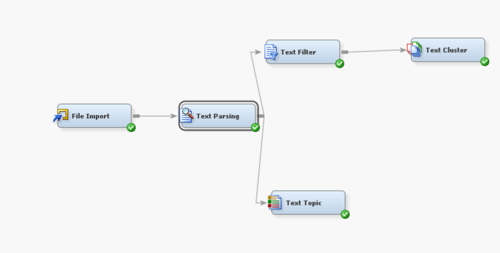ANLY482 AY2016-17 T2 Group7: Text Mining
With reference to Chart 11 in the Exploratory Data Analysis, we have selected 2 databases, Lawnet and Euromonitor, to focus on for this interim phase. This is due to the fact that these 2 databases are the most commonly used amongst the Law and Business students respectively, as these 2 schools are the 2 biggest contributors to the searches during the Term.
From the following actions applied to these 2 databases, we could then repeat these steps for the rest of the databases.
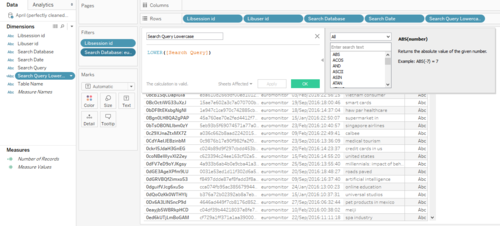
Chart 12: Text analytics data preparation
Firstly, we need to format the search queries to lowercase form for standardization purposes. We do that by using Tableau’s ‘LOWER()’ function, filtering out two data sets: euromonitor’s data being “euromonitor_text_data” and lawnet’s data being “lawnet_text_data”.
After which we use SAS Enterprise Miner 14.1 to carry out text analytics. We import ‘euromonitor_text_data’ and ‘lawnet_text_data’ respectively by using the File Import function and running though the text mining process in Chart 13: Text mining process.
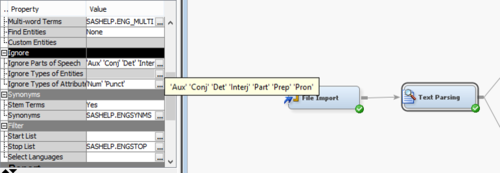
Chart 14: Text Parsing Configuration
We configure text parsing so that Parts of Speech such as ‘Aux’, ‘Conj’, ‘Det’, ‘Interj’, ‘Part’, ‘Prep’, ‘Pron’ and Types of Attributes including ‘Num’ and ‘Punct’ are all ignored.
Euromonitor
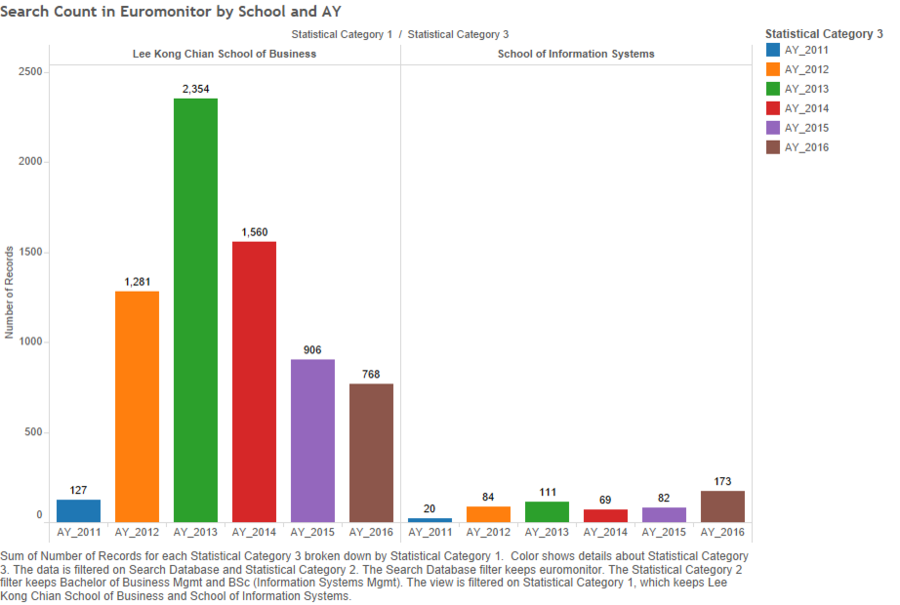
Chart 15: Search Count in Euromonitor by Schools & Admission Years
| Subject Matter: | Contrasting BBM against Bsc(IS) users across Admission Years |
|---|---|
| Thought Process: | As our team consists of BBM and Bsc(IS) students, we discussed among ourselves and then with our peers of our faculties about how often we use Euromonitor in our research. Amidst our sharings, we found out that more often than not, BSc(IS) students do not use Euromonitor as much as their BBM counterparts. However, some of the BSc(IS) students shared that they have used Euromonitor rather intensively in their 1st - 2nd years, mainly for researching on the University Core modules which they have to take (eg. TWC, BGS).
Thus, we attempted to verify this discussion through the analysis of the data. |
| Analysis: | From Chart 15, we observe that the number of searches performed by BSc(IS) users across all admission years are significantly lower than their BBM counterparts. Thus, this could possibly verify our thoughts that BSc(IS) users indeed use Euromonitor for research lesser than their BBM counterparts.
Most interestingly, BSc(IS) users in AY_2016 have performed the most number of searches as compared to their faculty users from the other admission years. The first year of the SMU BSc(IS) curriculum usually consists of University Core Modules such as BGS (Business, Government & Society) and TWC (Technology and World Change) which are by nature, research-intensive modules. Thus, it would be more probable that BSc(IS) users in AY_2016, meaning they are in their first year in 2016, are performing such high number of searches because they are enrolled in such research-intensive modules. The number of research-intensive modules in the curriculum decreases significantly as the typical BSc(IS) user moves into his/her 2nd year and thereafter. This could be shown by the low number of searches performed by BSc(IS) users in AY_2015 (1st/2nd Year in 2016), AY_2014 (2nd/3rd Year in 2016) and AY_2013 (3rd/4th Year in 2016. Contrasting with BBM users, the number of searches across all academic years remains high. This could be due to the nature of the BBM curriculum which consists of research-intensive modules throughout. |
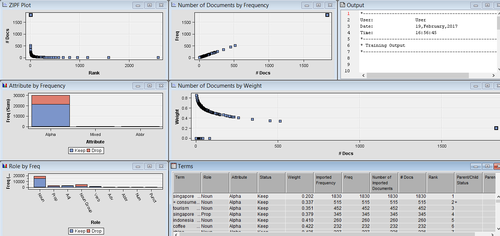
Among 30720 cases, 8257 (26.88%) are dropped after parsing the data.
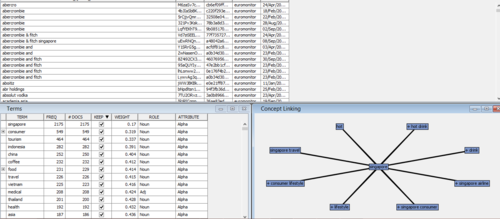
In addition to parsing of the data, we noticed that the Term “singapore” has the greatest frequency of 2175, followed by the Terms “consumer” and “tourism”.
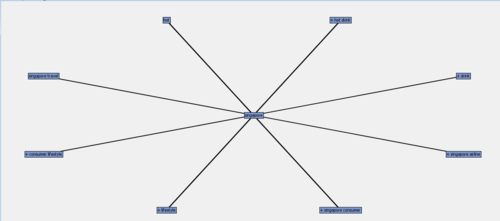
From the graph above we noticed that ‘singapore’ is linked to ‘hot drinks’, ‘hot’, ‘drink’, ‘singapore travel’, ‘consumer lifestyle’, ‘lifestyle’, ‘singapore consumer’ and ‘singapore airline’
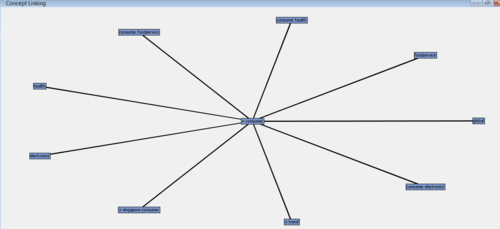
From the graph above we noticed that ‘consumer’ is linked to ‘consumer health’, ‘consumer foodservice’, ‘electronics’, ‘’, ‘singapore consumer’, ‘trend’, ‘consumer electronics’ and ‘global’.
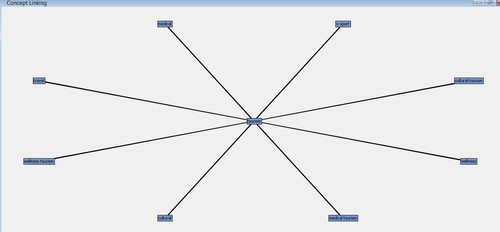
From the graph above, we noticed ‘tourism’ is linked to ‘medical’, ‘sport’, ‘cultural tourism’, ‘wellness’, ‘medical tourism’, ‘cultural’, ‘wellness tourism’ and ‘travel’.
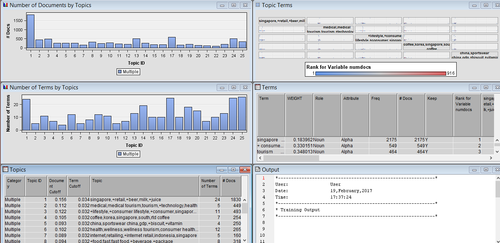
This is the result shown by function Text Topic.
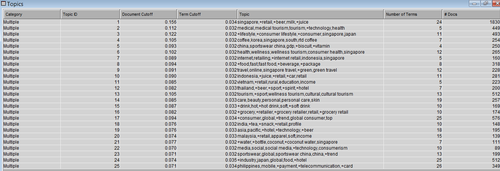
From the graph above, results from Text Topic function shows that “singapore”, “retail”, “beer”, “milk” and “juice” are of the same topic, “medical”, “tourism”, “technology” and “health” are of the same topic, and “lifestyle”, “consumer”, “singapore”, “japan” are of the same topic.
Lawnet
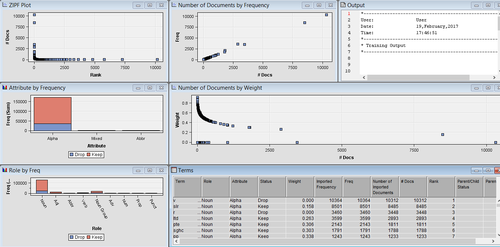
Among 172363 cases, 36066 are dropped (20.92%). As compared to euromonitor, lawnet has a larger amount of searches.
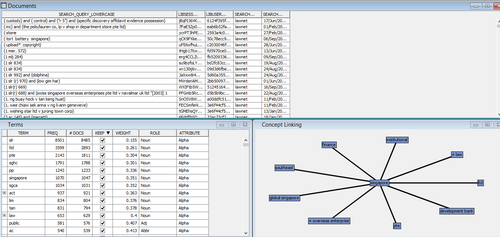
The most popular search Terms are ‘slr’, ‘ltd’ followed by ‘pte’. These stands for Singapore Law Review, Ltd as in Pte Ltd and Pte as in Pte Ltd respectively. This means that students search for Singapore Law Review a lot.
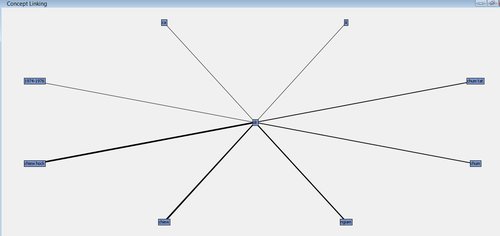
From the graph above, we noticed that ‘slr’ which stands for Singapore Law Review, is linked to words which are presumably names such as ‘chum tat’, ‘ngiam’, ‘chiew’, ‘chiew hock’, ‘chum’ and the time period ‘1974-1976’. These could possibly tell us the popular cases associated with the Singapore Law Review and the time period for which cases took place in.
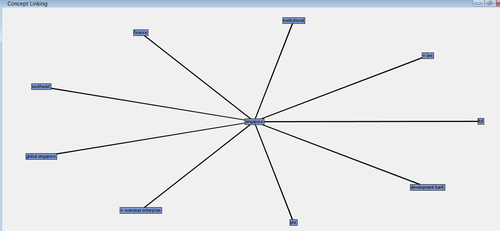
From the graph above, we noticed that ‘singapore’ is linked to words such as ‘overseas enterprise’, ‘pte’ (presumably pte in Pte Ltd, the short form for Private Limited), ‘global singapore’, ‘southeast’, ‘finance’, ‘institutional’, ‘law’, ‘ltd’ (presumably Ltd in Pte Ltd) and ‘development bank’.
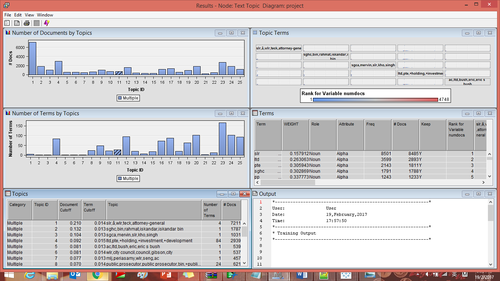
This is the result shown by function Text Topic.
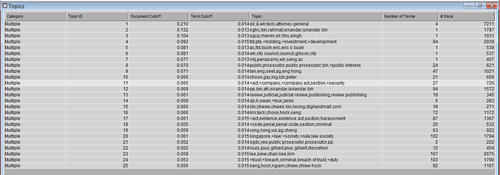
From the table above, results from Text Topic function shows that “slr”, “wlr”, “teck”, “attorney-general” are of the same topic, this is possibly because people who searched for singapore law review (slr), also searched for world law review (wlr) while the attorney-general is the legal advisor to the government and “teck” could be someone’s name. “sghc”, “bin”, “rahmart” and “iskandar” are of the same topic as “sghc” stands for singapore high court.
The name ‘Rahmart’, ‘bin’ and ‘Iskandar’ is an interesting search Term whereby it features a former policeman of the name ‘Iskandar bin Rahmat’ who was charged for committing double murder at Kovan MRT in 2013. This is a widely known local criminal case which most probably is being used as a prime example of criminal cases in the SMU Bachelor of Laws Curriculum, thereby explaining the popularity of these keywords.
More interestingly, the ‘Rahmart’ is in fact a misspelling of the name ‘Rahmat’. This could possibly indicate that majority of the searches for ‘Rahmart’ were performed by users who are not of the Malay descent. Or this could possibly be due to a misspelling from the course material that was provided to the users, presumably Law students.
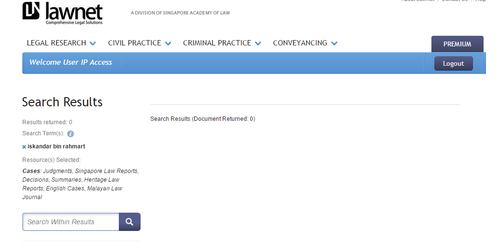
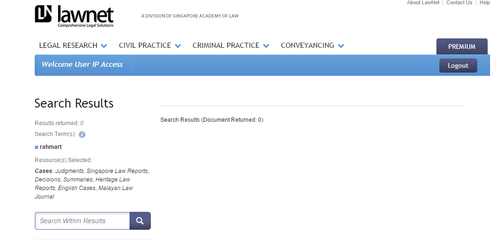
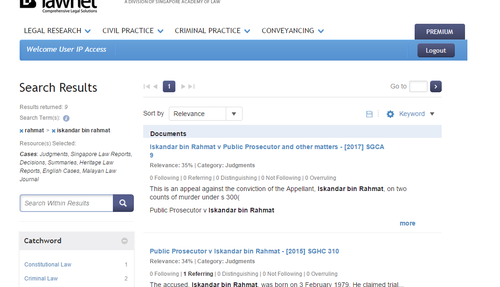
When we searched “rahmart” or “iskandar bin rahmart”in lawnet we could not find anything as the correct name of the case should be “rahmat”, but SAS Text Miner grouped “rahmart” and “iskandar”, “bin” together so we speculate that many students searched for “iskandar bin rahmart” and found nothing. A recommendation system which will automatically link “rahmart” and the “iskandar bin rahmat” case would be welcomed.
